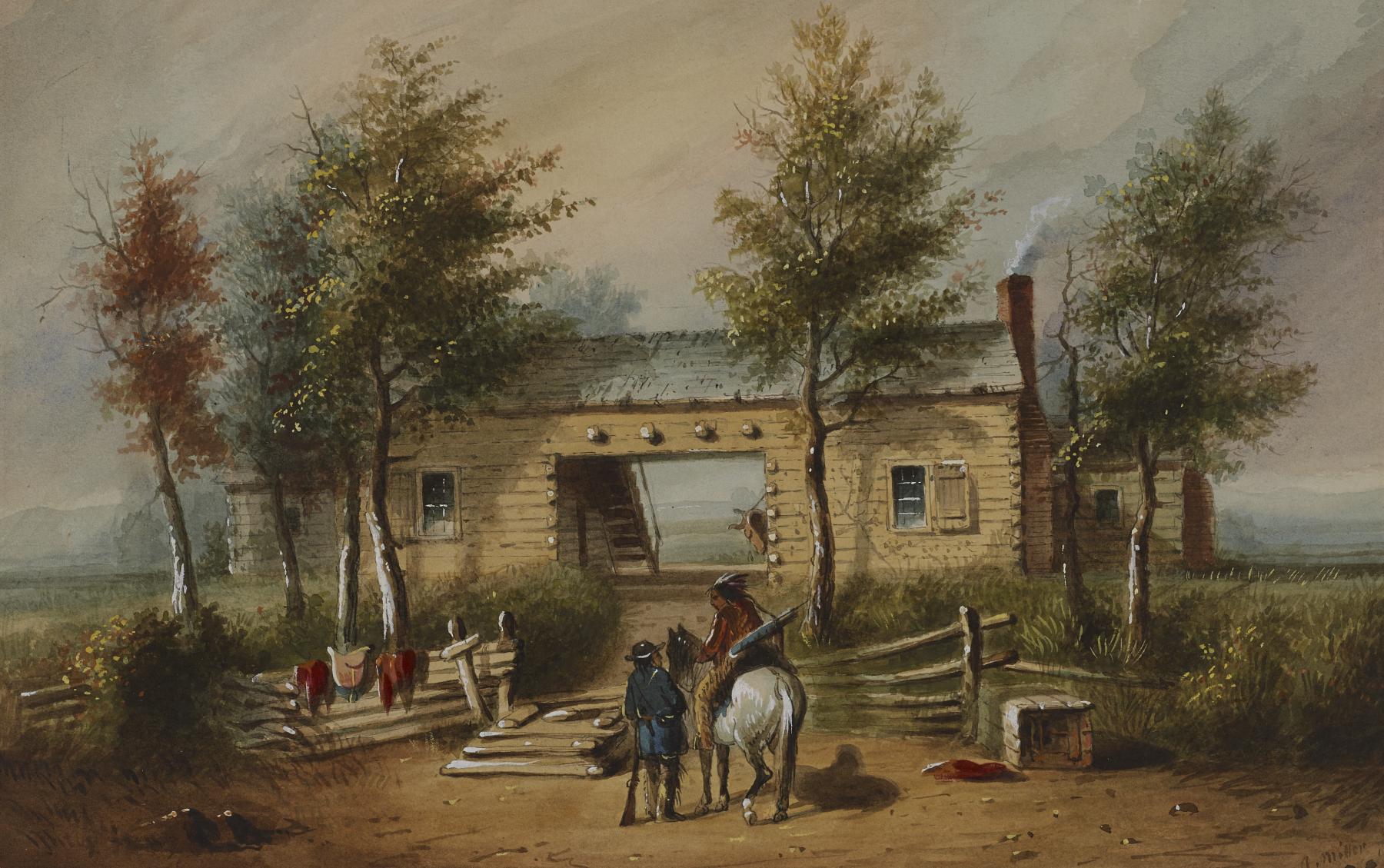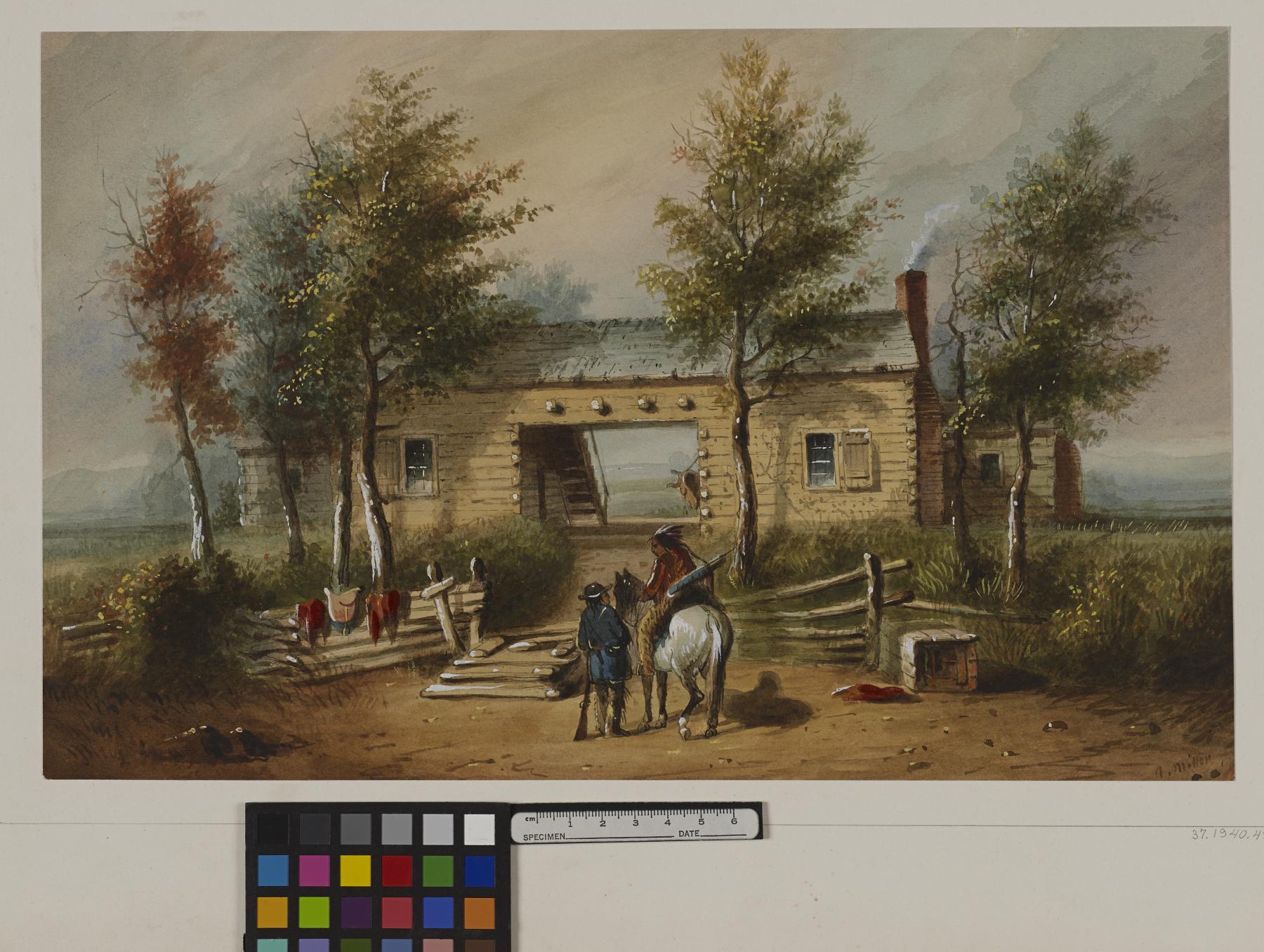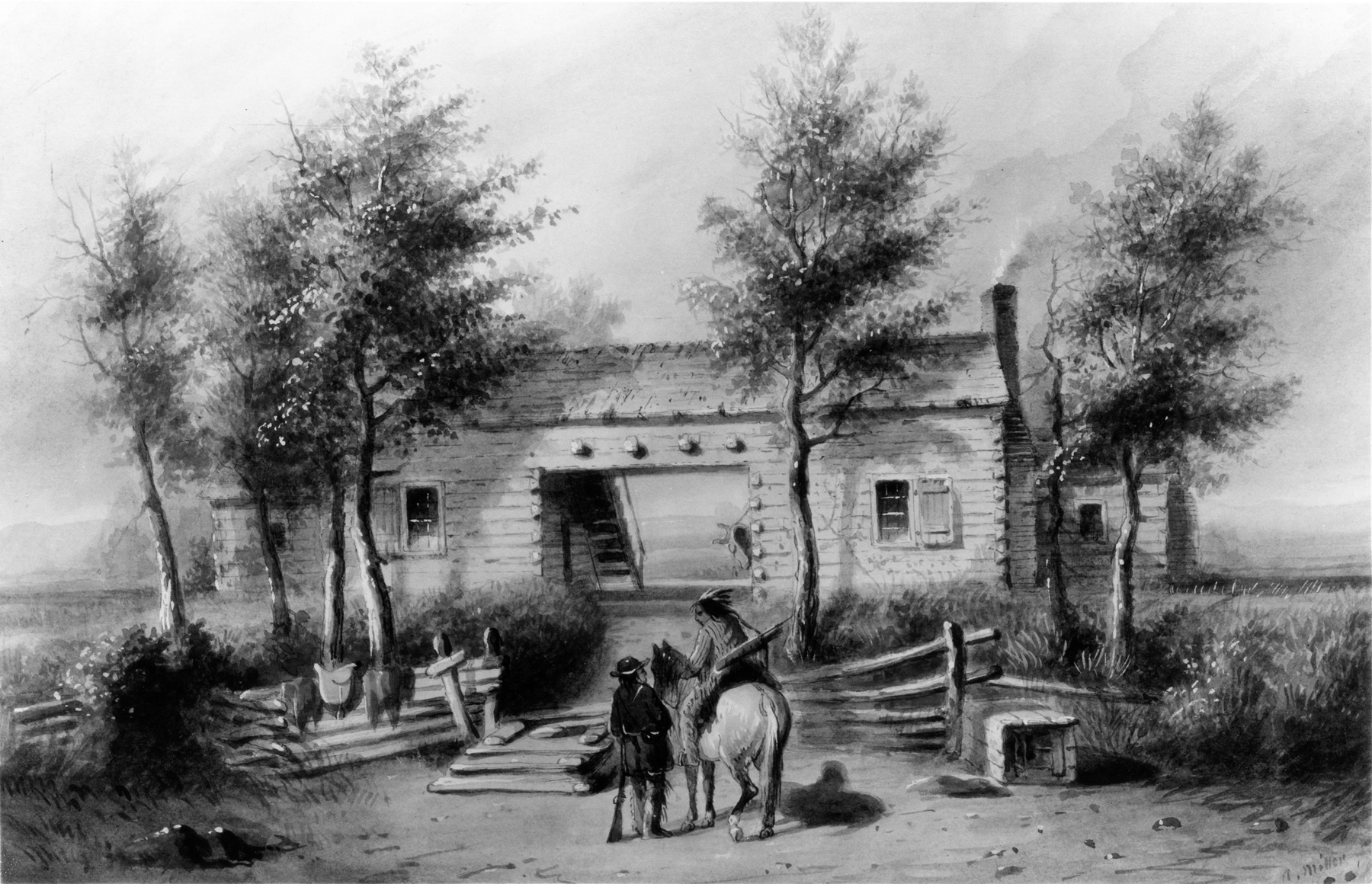Western Log Cabin
(18th and 19th Centuries )
Extracts from Alfred Jacob Miller’s original text, which accompanied his images of Native Americans, are included below for reference. These words, which shaped how Miller’s contemporaries viewed the watercolors, reveal the racism and sexism embedded in 19th-century exploration and colonization of the western part of what is today the United States.
"This building, situated at the time on the Western frontier of the United States, was the last house we encountered previous to entering the wilderness. It was inhabited by a Shawnee Indian, who for a wonder had been benefited by civilization, for he here cultivated successfully about 100 acres of arable land, and had everything in plenty around him. The building was 50 feet in length, flanked by kitchen and offices, built of logs dovetailed at the corners, with a Hall through the centre about 15 feet wide, and was altogether a most comfortable country residence. Here we witnessed an Indian marriage, and after it came a feast, - the tables spread with a profusion of substantials, music and dancing closing the ceremonies. We encamped here for about a week, purchasing mules and making our final preparation for a savage life." A.J. Miller, extracted from "The West of Alfred Jacob Miller" (1837).
In July 1858 William T. Walters commissioned 200 watercolors at twelve dollars apiece from Baltimore born artist Alfred Jacob Miller. These paintings were each accompanied by a descriptive text, and were delivered in installments over the next twenty-one months and ultimately were bound in three albums. Transcriptions of field-sketches drawn during the 1837 expedition that Miller had undertaken to the annual fur-trader's rendezvous in the Green River Valley (in what is now western Wyoming), these watercolors are a unique record of the closing years of the western fur trade.
Provenance
Provenance (from the French provenir, 'to come from/forth') is the chronology of the ownership, custody, or location of a historical object. Learn more about provenance at the Walters.
William T. Walters, Baltimore, 1858-1860, by commission; Henry Walters, Baltimore, 1894, by inheritance; Walters Art Museum, 1931, by bequest.
Exhibitions
| 1989 | The Western Experience. The Monmouth Museum, Lincroft. |
| 1988 | Alfred Jacob Miller: Maryland and the West. The Walters Art Gallery, Baltimore; Washington College, Chestertown; Frostburg State University, Frostburg; Jewish Community Center of Greater Washington, Rockville. |
| 1984 | Alfred Jacob Miller: Watercolors and Drawings. The Walters Art Gallery, Baltimore. |
Conservation
| Date | Description | Narrative |
|---|---|---|
| 11/20/1975 | Treatment | re-framed; stabilized |
| 2/21/1989 | Loan Consideration | examined for loan |
| 8/28/1992 | Treatment | mounted |
Geographies
USA (Place of Origin)
Measurements
H: 9 3/16 x W: 14 7/16 in. (23.3 x 36.7 cm)
Credit Line
Commissioned by William T. Walters, 1858-1860
Location in Museum
Not on view
Accession Number
In libraries, galleries, museums, and archives, an accession number is a unique identifier assigned to each object in the collection.
In libraries, galleries, museums, and archives, an accession number is a unique identifier assigned to each object in the collection.
37.1940.48







